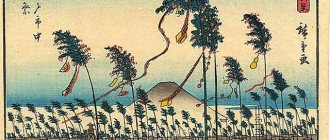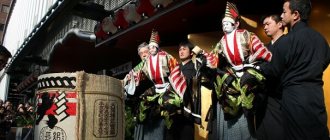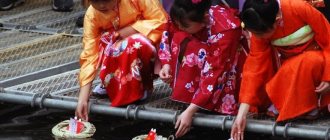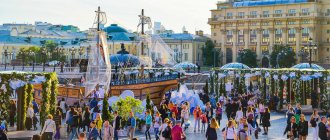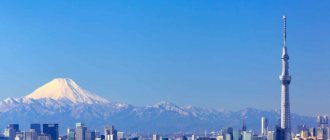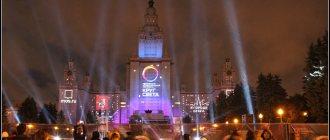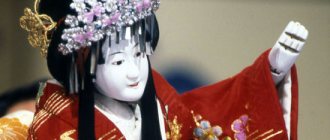It's the season for taiko sounds, late-night food stalls, yukata and goldfish games: yes, it's matsuri time!
Summer in Japan brings a lot of creative things to do to help you brave the hot weather - watermelon and soda, kakigori, matcha, dancing and yukata are a few of them. But there is only one place where you can enjoy them in true Japanese style - the summer matsuri night that attracts tourists who decide to go on holiday to Japan in June, July or August.
While there are many unique festivals across the country, here are our top ten festivals in Tokyo and other parts of Japan! Stop waiting, it's time to buy a tour to Japan and plunge into the Matsuri spirit!
Fireworks Festival on the Sumida River (Tokyo)
Rumor has it that the first festival took place in 1733. The Sumida River Fireworks Festival is one of the most popular (and crowded) summer festivals in Tokyo. With a history of nearly four centuries, it survived the Meiji Restoration and continued to be held until the world wars. The festival was reinstated in 1977 and celebrated its 40th anniversary in its current form in 2017. Visitors will be treated to a spectacular display of 22,000 fireworks, but be prepared - nearly a million people attended the event last year, so expect large crowds!
When: July 29, 2021, 19:05 – 20:30;
Where: Sumida River, Sumida-ku, Tokyo;
How to get there: the nearest station to the 1st venue: Asakusa or Honjo-Azumabashi, the closest station to the 2nd venue: Kuramae or Ryugoku.
Shukatsu festival – funeral rehearsal
The Japanese have a special attitude towards death. They prefer to face it and are not afraid of its advance. Therefore, the country has a shukatsu festival - a holiday where they rehearse their own funeral. It takes place in the capital - Tokyo. It looks like a huge exhibition of funeral goods, in which dozens of funeral agencies participate.
Any participant in the event can try on the clothes in which they will go on their last journey, pick up a coffin and even try out their final hairstyle. They are happy to take their own photos and express their preferences to their loved ones regarding the purchase of this or that product. Not all residents of the country have the opportunity to get to the capital, so many approach the holiday with interest and dream of getting into the center of events.
Shinjuku Eisa Matsuri (Tokyo)
Born on the island of chinsuko and brown sugar, Okinawa's dance and music culture has always been distinct from that of the mainland, and Eisa Matsuri was no exception. Traditional costumes, drums and dances will look and sound different. The origin of the name is unknown, but one theory is that it came from an exclamation used in Ace's original song, "ensaa". This year will mark the event's 44th anniversary, and organizers expect close to a million people to join in the fun!
When: July 29, 2021, 12:00 – 20:00;
Where: Shinjuku-ku, Tokyo;
How to get there: Shinjuku Station West Exit.
Fukagawa Matsuri (Tokyo)
The Fukagawa Festival, officially known as the Fukagawa Hachiman Matsuri, is one of the three great festivals of Edo along with the Kanda Matsuri and the Sanno Matsuri. The Fukagawa Festival is held at the ancient Tomioka Hachimangu Shrine in the Koto district. Since 1642, the festival has featured a procession of mikoshi (portable shrines) where 120 mikoshi are paraded through local streets while spectators splash water on the participants.
When: August 11-15, 2021, 9:00-21:00;
Where: Tomioka Hachimangu, 1-20-3 Tomioka, Koto-ku, Tokyo;
How to get there: Monzen-nakacho Station, Exit 1.
National holidays
1st of January
— New Year's Day
2nd Monday of January
— Coming of Age Day
February 11
— State Founding Day
March 21 (in leap years March 20)
— Vernal Equinox Day
April 29
— Greenery Day
May 3
— Constitution Day
May 5
— Children's Day
3rd Monday July
- Sea Day
3rd Monday of September
- Day of Honor for the Elderly
September 23 (or 24)
- Autumn Equinox Day
2nd Monday of October
- Health and Sports Day
3
- Culture Day
November 23
- Labor Day
December 23
- Emperor's Birthday
Azabu-Juban Matsuri
This festival is officially known as Azabu-Juban Norio Matsuri. "Norio" is translated as "summer nights" according to many dictionaries, but upon closer examination, the more accurate definition is: "to avoid the heat and find coolness." 300 thousand participants of this “trend” festival (most of whom are young people) gather here for the sole purpose of overeating. Stalls sell regional dishes from all over Japan, from the northern island of Hokkaido to southern Okinawa. The Bon Dance in the evening is also a must-see event for travelers planning a summer holiday in Japan.
When: August 26-27, 2021, 15:00-21:00;
Where: Minato-ku, Tokyo, Azabu-Juban shopping area;
How to get there: Azabu-Juban station, exit 4.
Kanamara Matsuri - phallic festival
Surprisingly, the Kanamara Matsuri, or phallic festival, is directly related to the Japanese faith of Shinto. It represents the belief that all elements of nature are filled with life, good and evil spirits live in them. Their worship has a long history.
There are two theories about the origin of the festival. According to one of them, the goddess, in whose vagina a monster had settled, biting off the genitals of her men and preventing her from having a child, turned to the blacksmith. He created a steel penis for her, which she used to drive away the demon. According to another theory, it is a festival of fertility and childbirth. This festival has been held since the 17th century and lasts a week. It was first held by courtesans who fought for their rights.
The main day is the first Sunday of the fourth month of the year - it is marked by a procession around 3 huge phalluses - pink, black and beige. Each festival participant wants to touch at least one penis - it is believed that this will bring healthy children into the family.
Koenji Awa Odori (Tokyo)
Originating in Tokyo approximately 56 years ago, the festival is now considered one of Tokyo's largest and most famous summer events of its kind. With 10,000 dancers walking through the streets of Koenji, the small area manages to attract about a million visitors every year. It is crowded, but the experience of such unbridled fun is priceless!
When: August 26-27, 2021, 17:00-20:00;
Where: Sugunami-ku, Tokyo, Koenjiminami 2nd, 3rd and 4th chome, Koenjikita 2nd and 3rd chome
How to get there: Koenji Station.
Heso Matsuri - Festival of Dancing Navels
The festival dedicated to dancing navels began to be held about 50 years ago in Furano (according to the comic idea of the holiday, it is the “belly button of the island of Hokkaido”). In the first year it was not very successful - there were less than two dozen participants. Now Heso Matsuri has thousands of followers.
To participate in the celebration, you need to paint your belly (your belly button is your mouth), buy pants with fake hands on the sides, and cover your face with a large hat. Simple dance steps can be learned right on the street during the parade. The Japanese gather in the square from early morning and begin a cheerful and colorful procession. This is one of the favorite holidays of children, who take part in it along with their parents. Heso Matsuri is held in July, at the end of the month.
Soma Nomaoi (Fukushima)
Known for its horse breeding, the Soma region in Fukushima Prefecture hosts the annual 1000-year-old Soma Namaoi Festival. It is organized by three different shrines in the area - Ota, Odaka and Nakamura. The highlight of this festival is the recreation of a battle scene from the turbulent Sengoku period in Japan. Clad in heavy armor and wielding katana swords, several hundred samurai horsemen engage in battle to capture the 40 sacred flags.
When: July 29-31, 2017;
Where: Nomaoi Gyuretsu and Hibarigahara Field, Soma, Fukushima;
How to get there: JR Haranomachi Station.
Akutai Matsuri - Festival of Curses
In many cultures, swearing has long been a way of protecting against evil spirits. In Japan, the Okutai Matsuri holiday is dedicated to this. It takes place in Kyoto, on Mount Atago, and is dedicated to the goddess Izanami, who is responsible for death. The festival of swearing is celebrated before the New Year, on the penultimate Sunday of the 12th month.
Temple employees, dressed in demon costumes, slowly walk past the crowd, who hurl curses and swear words at them, tearing ritual cakes out of their hands. Despite negative statements, the Japanese receive a charge of strength, feel energized and devoid of worries and suffering. During swearing, the Japanese free themselves from negativity, entering the New Year calm and peaceful. At the end of the festival, everyone drinks wine and makes wishes.
Aomori Nebuta Matsuri (Aomori)
The Aomori Nebuta Matsuri, or simply Aomori Nebuta, is one of the three largest festivals in the Tohoku region. The word "nebuta" refers to giant paper platforms made in the shape of terrifying warriors. According to legend, the commander Sakanoue no Tamuramaro placed giant lanterns depicting warriors and monsters on the top of the hills to frighten the enemy army. Nowadays, at festivals, dancers wear a unique outfit (which can be described as a kimono with a fruit basket as a headdress) called "haneto" and invoke "rassera" by performing wild dances around the floats. One of the largest in the country, this matsuri should be included in the list of must-see festivals for travelers purchasing tours to Japan in the summer.
When: August 2-7, 2021, 19:10-21:00 (August 2-6), 13:00-15:00 and 19:15-21:00 (August 7);
Where: Aomori City Hall;
How to get there: JR Aomori Station.
Hadaka Matsuri - Naked Festival
The Naked Festival in Japan is dedicated to the New Year. Only men participate in it, because... The Japanese mentality does not allow women to show off their bodies. Men undress completely and cover their genitals with a cloth tied to their waist. There is no special mystery or meaning in the modern holiday, but it has long been believed that success and prosperity await the participants.
From the history of the holiday: it used to be a tradition during Hadaka Matsuri to touch pieces of paper that were thrown at the marchers. Nowadays, instead of sheets of paper, they scatter wooden sticks. The holiday is very popular, during the ceremony there is a stampede, so drunk people are not allowed there, the participation of women and children is prohibited. It’s interesting to watch this from the outside, because... Almost completely naked men are having fun like little ones.
Sendai Tanabata Matsuri (Miyagi)
Tanabata, literally meaning "evening of the seventh", originates from the Chinese festival of Qixi, which celebrates the annual meeting of a young shepherd and a weaver maiden, known in Japan as Orihime and Hikoboshi. While Tanabata holidays are celebrated throughout Japan, the Sendai Tanabata festival is the most popular, with nearly two million tourists flocking to see the thousands of wish cards decorating the bamboo trees. This is a breathtaking sight and a great opportunity to spend a bright and eventful holiday in Japan!
When: August 6-8, 2021, 10:00-22:00 (August 6-7), 10:00-21:00 (August 8). Fireworks August 5, 2021 19:00-20:30;
Where: Kotodai Park (Central Sendai and nearby shopping areas);
How to get there: JR Sendai Station.
Sakura blossom
The cherry blossom festival in Japan is one of the most ancient and revered. The date of celebration is different every year. The official day the trees begin to bloom is the appearance of the first cherry blossom at the Yasukuni Buddhist Temple located in Tokyo. On this day, meteorological services broadcast throughout the country a message that flowering has begun.
However, the cherry blossom festival in Japan is not an official event. Weekends and the like are not defined for this period, but this does not prevent the Japanese themselves and tourists from stopping and admiring the beautiful trees.
Kyoto Gozan Okuribi (Kyoto)
Gozan no Okuribi (literally "five mountain farewell lights"), or better known in Kyoto as Daimonji, is the summer equivalent of Halloween. During the festival, families in Japan prepare their homes to welcome the spirits of their ancestors, and on the third day, giant ritual bonfires are lit around the city of Kyoto in the shape of the five Chinese characters - Daimonji ("big" or "great"), Muo-Ho ("wonderful") dharma", referring to Buddhist teachings), Funagata ("boat shape"), Hidari Daimonji ("large left") and Toriigata ("shrine gate shape"). A trip to Japan in the summer should include a visit to this spectacular event, which attracts millions of tourists every year.
When: August 16, 2021, 20:00-20:30;
Where: Central Kyoto, panoramic views from Funaokayama Park;
Popular places: Daimonji: along the eastern bank of the Kamo River (Marutamachi Bridge - Misono Bridge); Moo Ho: near Notre Dame Women's College; Funagata: Near Kitayama Station (northwest of Kitayama Bridge); Hidari Daimonji: Near Nishioji Station (Saiin Station - Kinkaku-ji Temple); Toriigata: Saga Arashiyama area.
Wakakusa Yamayaki Festival - Burn the Mountain
One of the strangest and most spectacular festivals in Japan is Wakakusa Yamayaki. During it, Mount Wakakusa (formerly a volcano), which is located between the two largest temples - Buddhist and Shinto, is burned. The holiday has two theories of origin:
- The mountain was set on fire to reconcile the temples with each other.
- The burning of the mountain was carried out in order to exterminate pests.
At the end of January, a procession of several hundred people with torches goes to the foot of the mountain and sets it on fire. The burning of a mountain is a shocking sight, which symbolizes the birth of a new life - after a while, in place of the burned grass, a new one grows. Many participants do not leave the place of celebration until the mountain goes out.
Traditions in Japan may seem strange, but they are worthy of respect and attention. The Japanese themselves are so passionate about holding them that they begin to prepare several months before the event.
Like and subscribe to us on Yandex.Zen to receive new materials!
